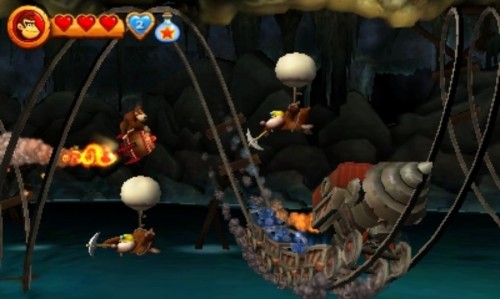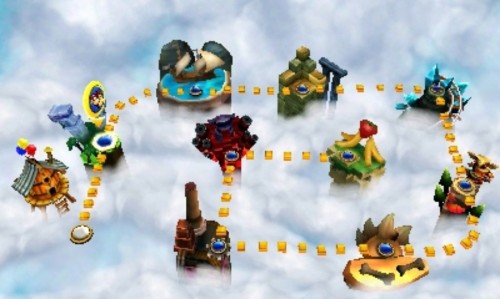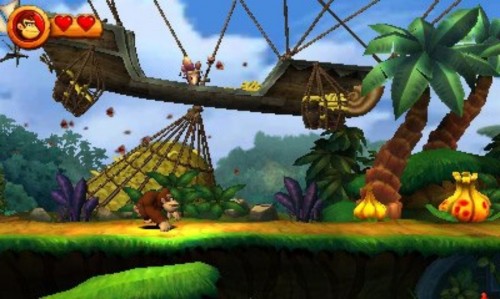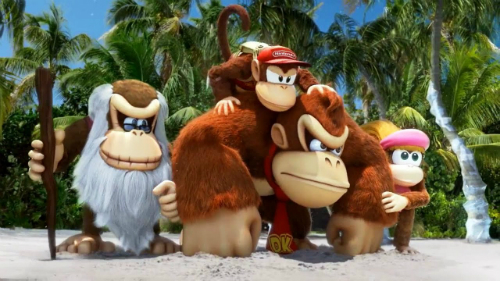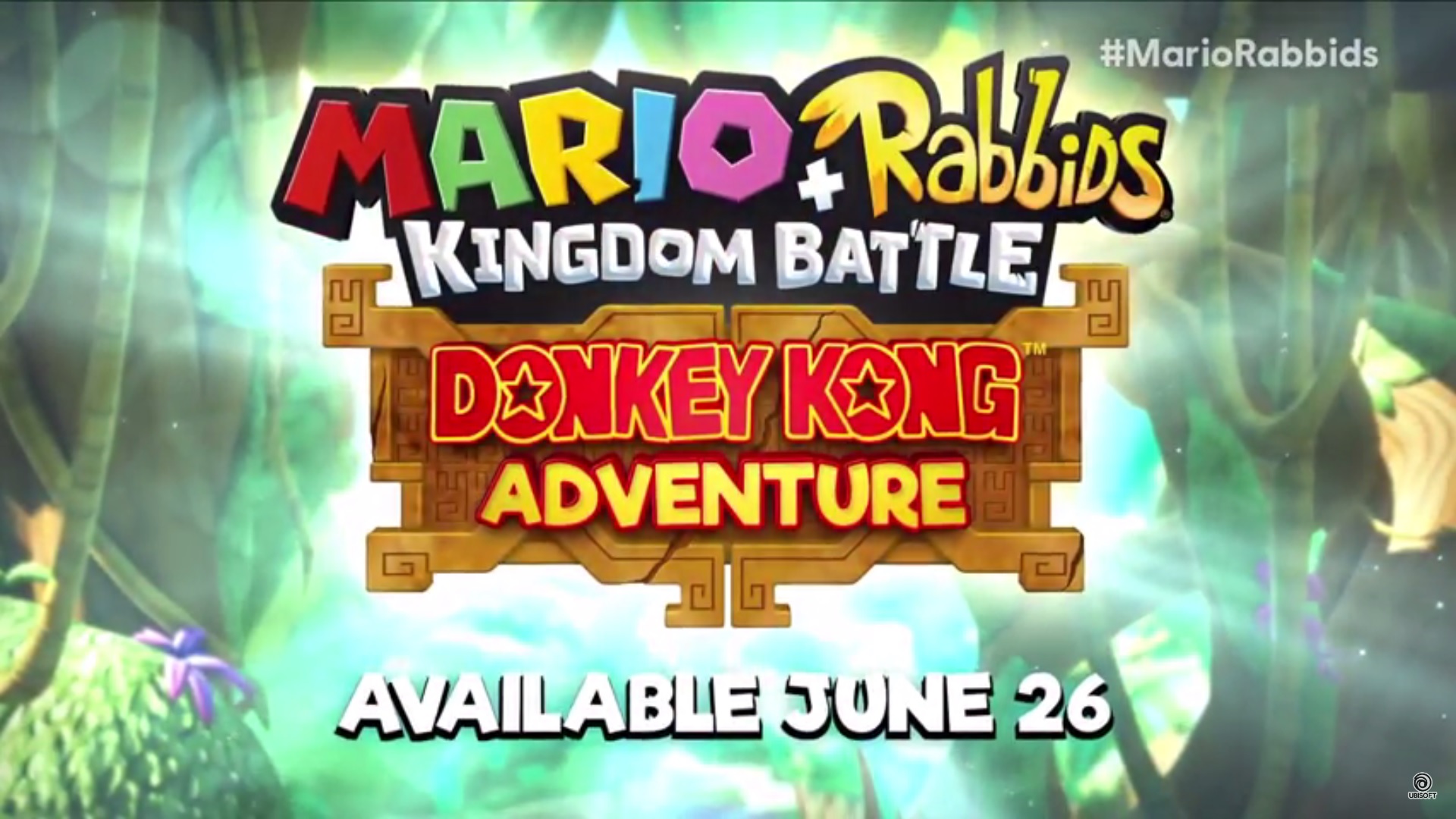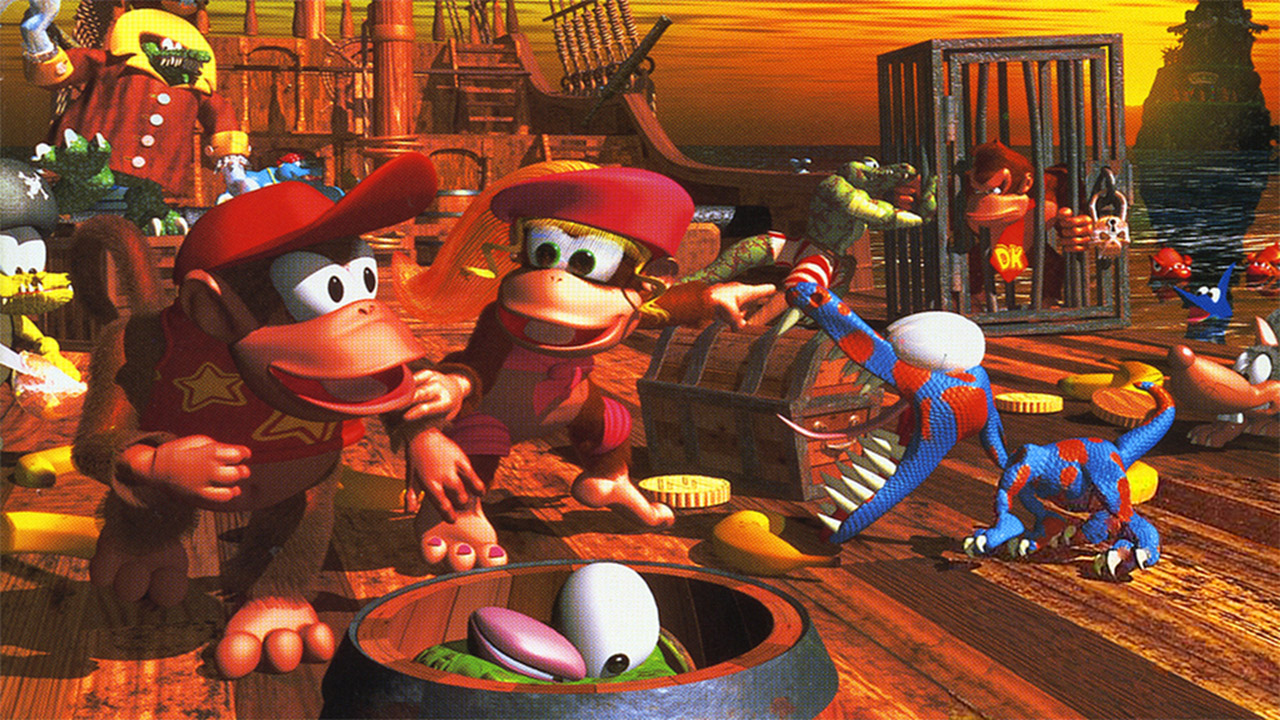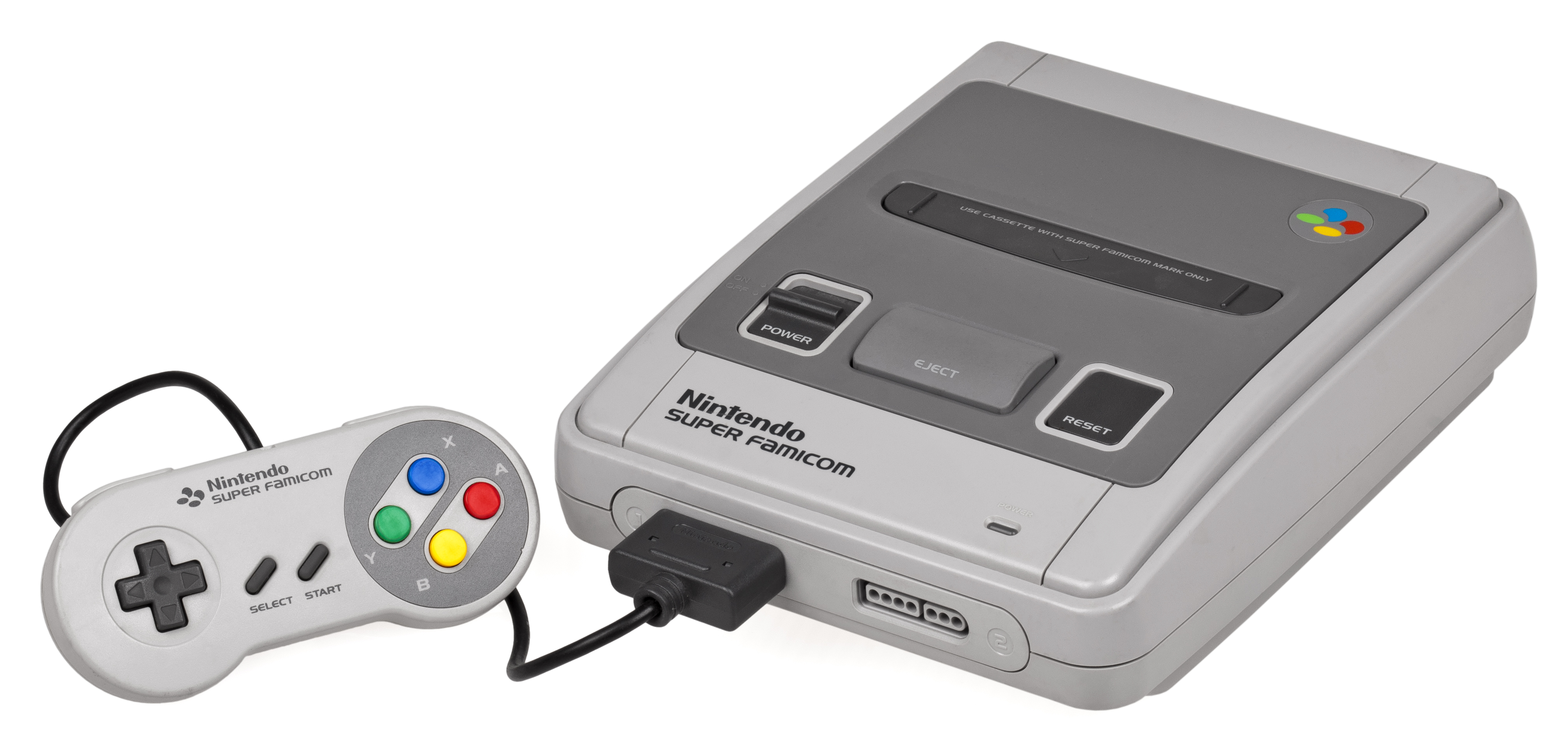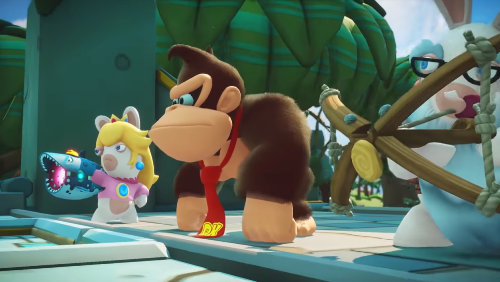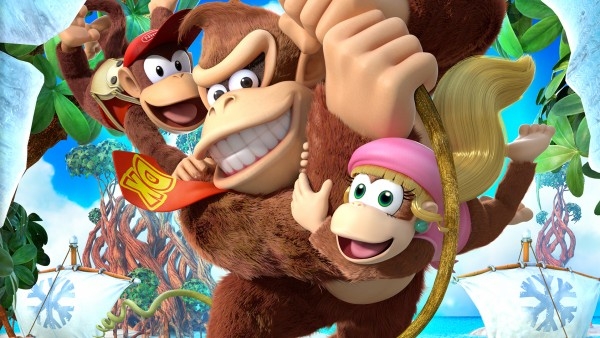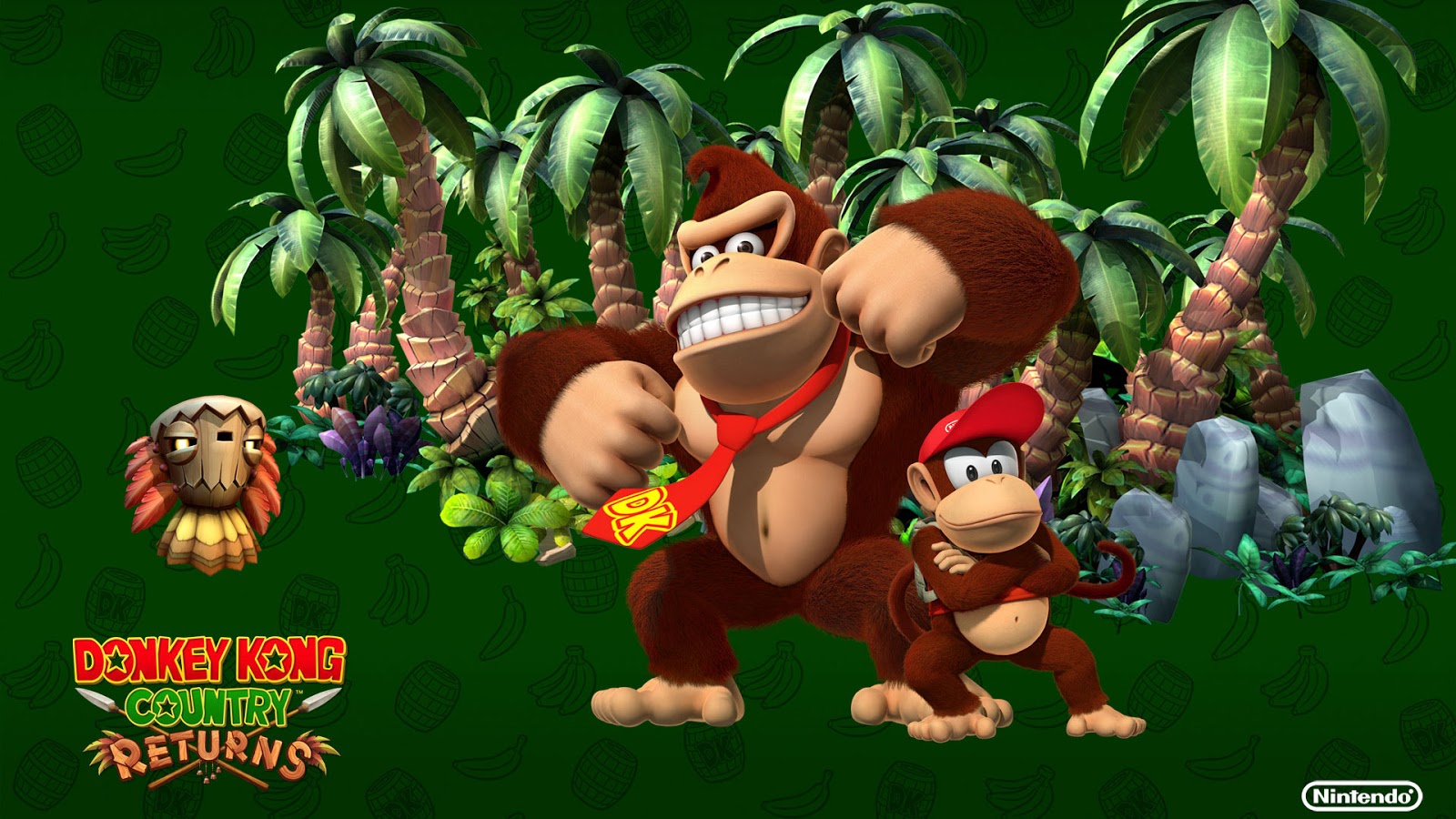
Anybody who has spent a few minutes talking with me about the Donkey Kong Country series will know my overwhelming admiration and joy directed squarely at that big stupid gorilla and his chimp pal. The originalDonkey Kong Country trilogy on the Super Nintendo is a staple of my childhood gaming experience, responsible for a near bottomless well of pleasant memories.
Nintendo’s subsequent non-Rare Donkey Kong spin-offs were okay, but distanced themselves too far from the bits and pieces that made me love the original trilogy. As far as I was concerned, the Donkey Kong Country of old was dead and gone.
And then, in late 2010, around fourteen years after Donkey Kong Country 3, the always wonderful Retro Studios did what I thought was impossible: returned to the franchise, rebooted it, and made what is to date one of my favourite platformers of all time. Sure, Donkey Kong Country Returns slipped and tumbled over a few of the original trilogy’s most memorable qualities (hello, soundtrack), but when it came to inventive, creative, and challenging platformer design, Retro arguably had Rare’s trilogy beat. Every level introduced something new, with production values through the room, and a spark of creativity in design and vision rarely seen with such will and consistency in other games. Here was a studio that successfully reinvigoratedMetroid now doing the same for Donkey Kong Country. And it was truly glorious.
For whatever reasons (I’m guessing to flesh out the library with a sure-fire seller), near three years later Nintendo has commissioned the folk at Monster Games (best known for Excite Truck and Pilotwings 3DS) to take Retro’s build and re-jig it for the Nintendo 3DS. Ports are always a tricky case, especially when they transcend the original platform to something quite different. There’s always a concern that some of that ‘magic’ of the original version will be lost in translation, the risk of bugs and inconsistencies, as well as the looming question of just how necessary a port is. After all, if you picked up the original game three years ago, why should you buy it again?
To my delight, Monster Games has done a bang up job taking Donkey Kong Country Returns from waggling on the TV to the mashing buttons in the palms of my hands, retaining most of the core experience while adding their own flair.
That latter point comes in the form of a new difficulty mode, and a new game world. Though the difficult curve is pretty well balanced, DKCR is notorious for its latter stages punishing even the most hardy players. And so, in response to this, DKCR3D has a game mode aimed at easing less skilled (and patient) platformer fans into Retro’s game world. This means both Donkey and Diddy will each have an extra life heart, and Cranky’s stores sells an assortment of new items aimed at saving you from that misplaced step off a ledge, offering you back-up DK barrels, and other assorted goodies. It’s a far easier game, but also the best way approach a new difficulty, as it’s in no way invasive to the original design. In fact, when you boot a game file you’ll be asked to choose between classic and new mode, with no option to switch mid-game. If you’d like to experience Retro’s difficulty level in its purity, you can do just that.
But for most fans the real meat in Monster Games’ addition comes from world nine. Vanilla DKCR had eight main worlds, while completing eight world-specific bonus levels would unlock one final, super challenging level. DKCR3D expands on this concept by not just retaining the original bonus level, but ballooning it into an entire worth worth of new levels. For the new world, named cloud, each level is themed after elements from each of the existing worlds, bringing multiple gameplay concepts together to act as a sort of…finality, to the mechanisms and style of what each world offered. And though Retro certainly raised the bar for level design standards very high, Monster has done a tremendous job of keeping up. Each of the world nine levels is wonderfully designed and feels right at home with the other eight worlds. In fact, I think this is a much better unlockable bonus and send off to the game, mirroring DKC2 and DKC3‘s lost worlds, and the rainbow/star worlds common in Super Mario Bros. It’s nice to unlock a final set of challenges, not just one.
The downside is if you’re a returning DKCR player you’ll have to work hard to access cloud world. As said, world nine replaces the original singular bonus level, and thus the same requirements must be met before it can be accessed. You’ll have to find KONG in every single level, and beat the challenging bonus stage in each of the eight worlds. Essentially, you’ll need to complete DKCR3D exactly as you would DKCR in almost its entire, before you can try your hand at the new levels. So even though cloud world is an appropriate expansion, it does position itself at a point in the game most demanding of playtime and skill.
As for the rest of the port, you’re looking at some good, and some bad. On the positive side of things, Monster has replaced the Wii version’s waggle controls with simple button presses. No need to shake anything just to make Donkey roll or ground slam. From scouring the internet, I’d say DKCR‘s waggle controls were hugely polarising. Personally, I didn’t mind them, as I felt once you got into a good groove the controls were both responsive and reliable. But they were admittedly unnecessary, and didn’t really add to the experience. So, if you’re one of those people horrified by DKCR‘s waggling, you’ll find DKCR3D‘s controls right at home. And honestly, I will admit the game just plays that bit better when everything is tied to simple button presses, not arbitrary motion gimmicks.
Another positive aspect is the graphics. DKCR remains one of the most beautiful games on the Wii, largely thanks to Retro’s absurd attention to detail in asset variety and positioning, as well as their all round stunning art direction. And to my surprise, DKCR3D holds this visual identity up quite high. DKCR‘s layered perspective, with flora swaying in the foreground, and deep backgrounds showcasing stunning vistas, looks absolutely gorgeous in stereo 3D. A small chip has been taken out of the lightening complexity and texture detail, but the game is otherwise a visual splendour, each stage bustling with wonderfully realised enemies, props, geometry, and colours to give it a unique image.
This does, however, come at a cost. And here’s where we find my biggest disappointed. DKCR3D runs at 30fps, with marginal dips below every now then, compared to DKCR‘s rock solid 60fps. Now, framerate is always going to be a topic with a diverse set of perspective. You’ve got folk who don’t care, and others who’ll spend thousands of dollars on PC hardware just to ensure their games run at an unbroken 60fps. For me it’s all relative. Whether it’s 30fps, 60fps, or anywhere in between, it comes down to the developer intention and the experience they wish to imprint on a player. It is important to note that framerate has an implication on design, as the more frames rendered per second the faster controller and mechanic response time. This is why many character action games and fighters aim for a locked 60fps, as it guarantees the smoothest, responsive experience where every frame counts.
DKCR3D isn’t unplayable at 30fps, but for me it’s quite clear DKCR‘s 60fps wasn’t just some stroke of luck Retro stumbled upon mid development. DKCR was specifically designed to play at 60fps, as the pin-point precise platforming and often fast moving stages are far better suited to highly responsive imagery and controls. 30fps feels objectively regressive. As someone who played the Wii release to death, the downgrade in response time and visual fluidity was instantly noticeable, making the game feel a bit slower and clumsier in presentation and control. The impact of halving the framerate will no doubt splinter opinions, but of all games DKCR is definitely one that was specifically designed to play at 60fps, and 30fps is a notable downgrade. So much so that I would have been much happier if Monster had been more aggressive with cutting down Retro’s assets to booster the average framerate and aim for a locked 60fps, if only in 2D mode.
I also found the 3DS’s low resolution screen to be a little troublesome when it came to the zoomed out perspectives that dominate some platforming sequences, particularly the bonus levels. The Wii wasn’t even a “high definition” system, but just as with the framerate you can tell Retro paid close attention to their rendering resolution, and thus just how sharp and clean the on-screen image would be, especially when zooming out. As the 3DS resolution is much lower, zoomed out levels turn Donkey into a jumble of poorly defined pixels…along with every platform he’s supposed to be jumping on. And like the framerate, that’s really just an issue of taking a game built for one system and sticking it on another. DKCR was made for the Wii’s rendering resolution, not the 3DS. And sometimes it shows, making for a wee bit more difficult platform definition.
This lands DKCR3D in the unfortunate position of me wanting and hoping for the game to edge out the Wii release as the definitive version, yet sadly dropping it just below. I say “sadly”, because there’s some really solid improvements here.
It really boils down to the framerate and rendering resolution (and thus image clarity). Button presses and an entirely new, excellently designed game world make an already phenomenal package even greater, but something like framerate in a game like this so deeply tied to the very act of play that it does disappointingly drag down the entire experience. It doesn’t really matter how many additional levels the game has, or if you’re using buttons over waggle. The response time is weaker from the opening intro all the way up until the credits roll. It’s a prevalent regression in presentation and design, the dips making it all the worse.
And so DKCR3D falls just shy of original release as my recommended definitive version. And though I may have ended this reveal with a healthy chunk of negativity, you’re actually in luck, because DKCR3D is by very nature of it’s outstanding platform design and complete package, 30fps included, one of the best platformers around, and far and away one of the most impressive games in the 3DS library. Donkey Kong Country Returns 3D is a must-have for anybody yet to experience Retro’s (and now Monster’s) platforming mastery, and surely worth a double dip for DKCR Wii fans looking for a bit more monkey business in their life.
Incredible level design | Gorgeous graphics | Excellent new world
30fps instead of 60fps | Lower resolution means lower clarity

